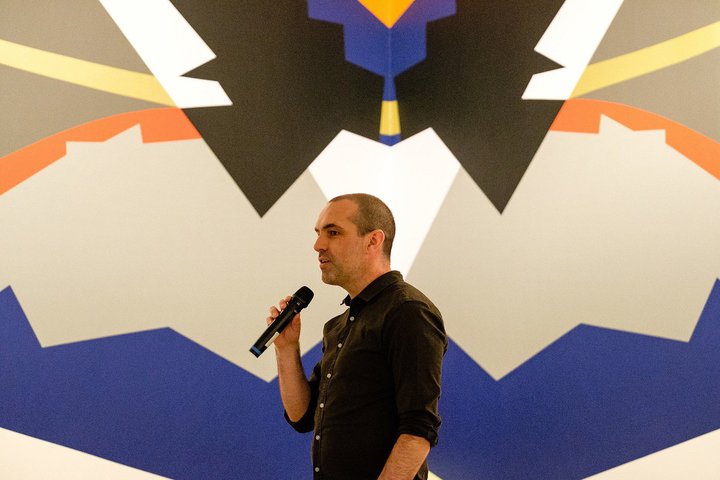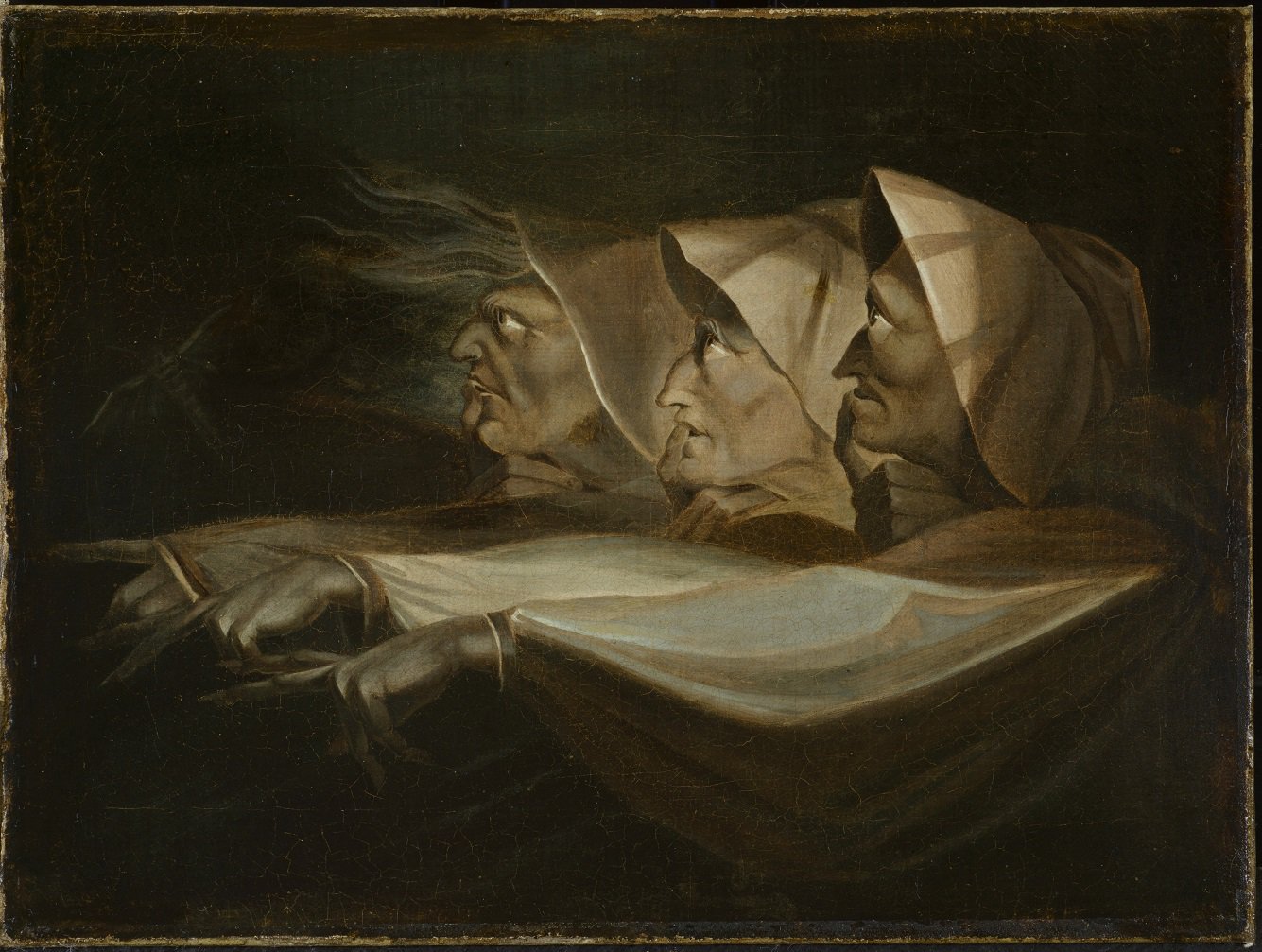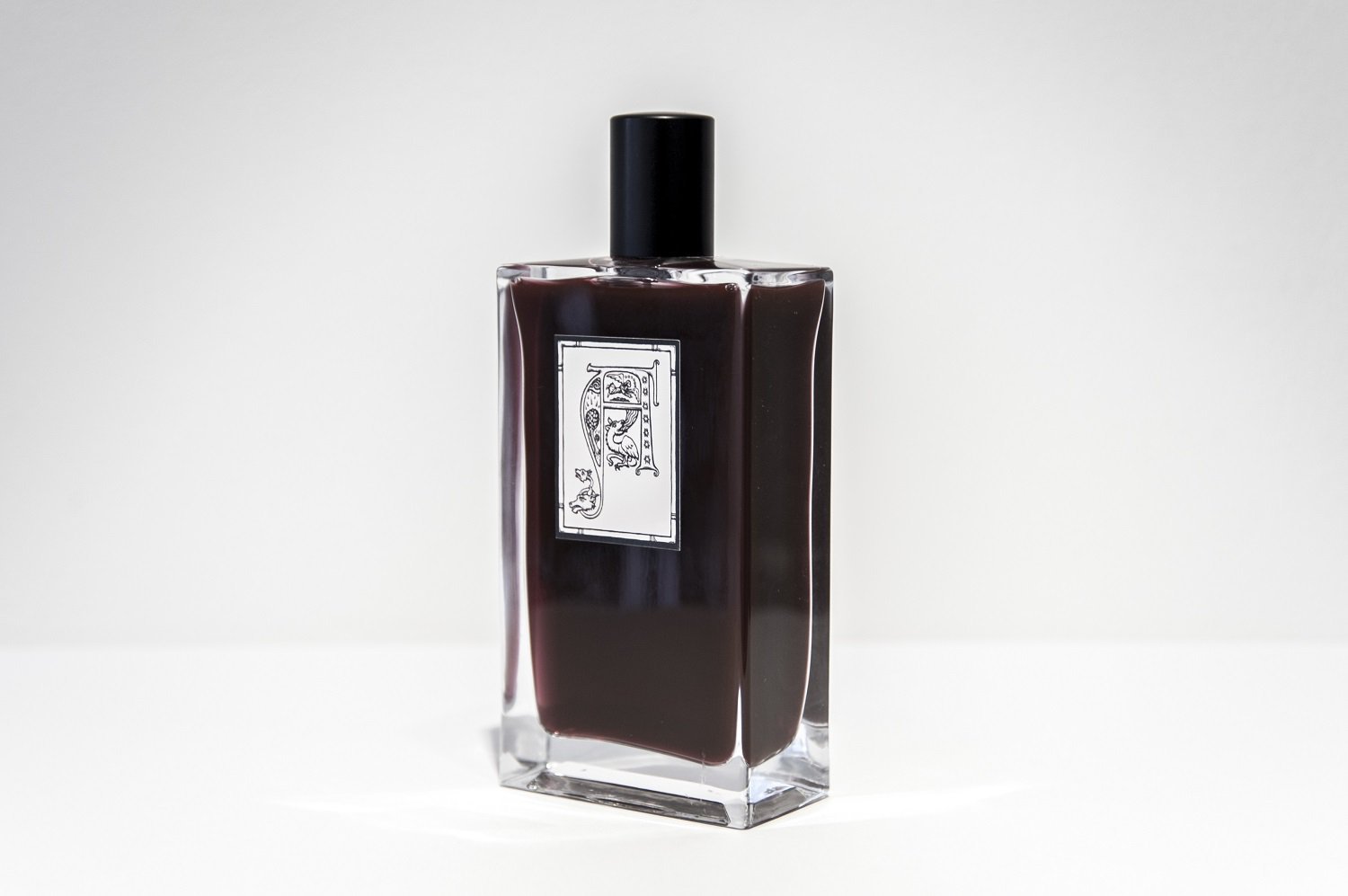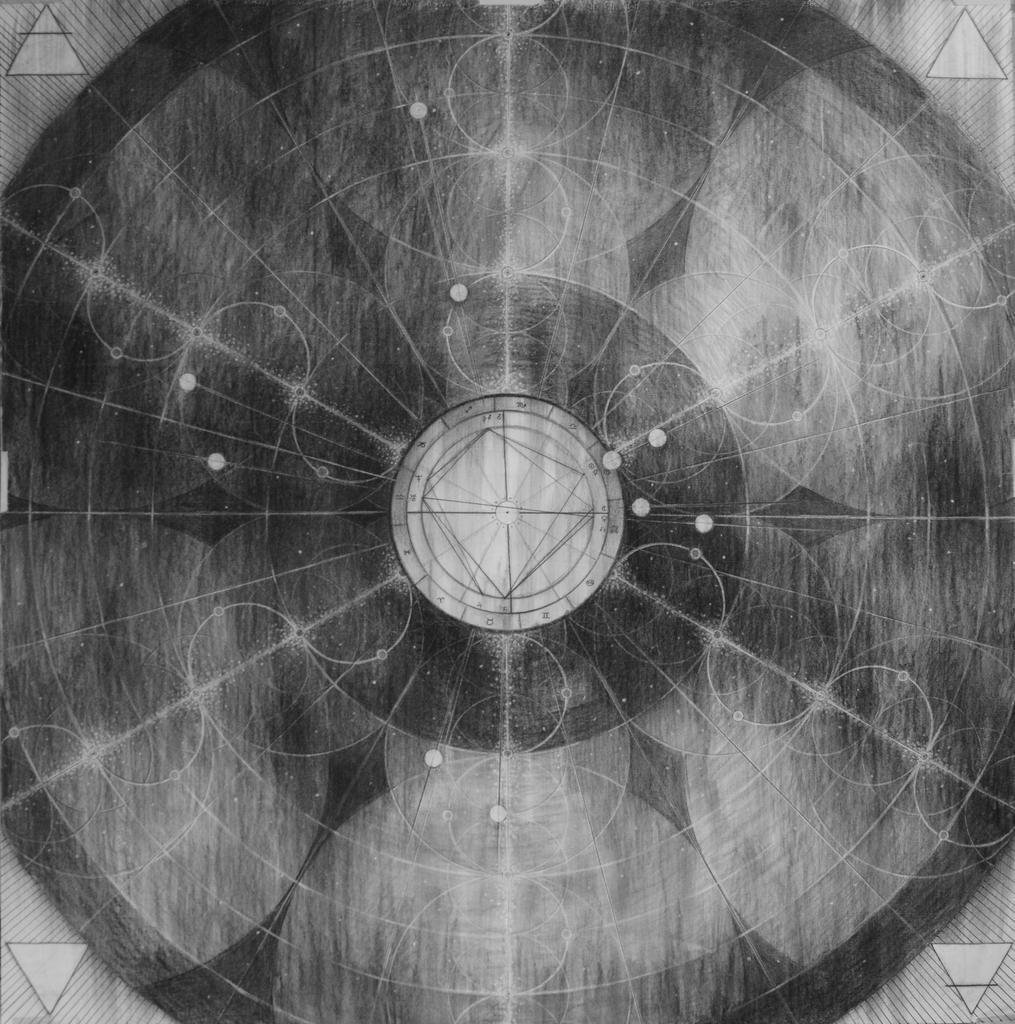27 August 2017
City Gallery Curator Aaron Lister discusses three stand-out works from Occulture: The Dark Arts. This free exhibition features artists who push the symbolic, formal and material languages of occult traditions into new forms.
 City Gallery
City Gallery
Occulture: The Dark Arts is on at City Gallery Wellington until 19 November.
Henry Fuseli
Study for the Three Witches in Macbeth, c.1783
oil on canvas
Collection Auckland Art Gallery Toi o Tāmaki
A classic of art history, and also a classic image of maleficia—the evil of witches. Fuseli takes Macbeth’s witches and hams up their appearance to horror-film pitch. Witchcraft is everywhere in this exhibition. There are Rosaleen Norton’s witchy, trance-induced paintings, a spell in the form of a wall painting by Mikala Dwyer, and Fiona Pardington’s altar of charged objects. Fuseli’s witches point to a lot of things in Occulture: The Dark Arts. Dane Mitchell presents silk banners printed with mystical hand gestures. One seems to point back at the witches, redirecting their dark energies. A moth hovers in the background of Fuseli’s painting. Brendon Wilkinson treats the moth as a material rather than just a symbol. His drawing is made entirely out of moth wings.
-“Fuseli takes Macbeth’s witches and hams up their appearance to horror-film pitch.”

Study for the Three Witches in Macbeth
Thomson & Craighead
Apocalypse, 2016
perfume
The history of art shows us what the apocalypse might look like, but what will it smell like? UK artists Thomson & Craighead have made a perfume for and of the apocalypse. They started with the Book of Revelation, identifying all its references to scent. These ranged from smoke, wormwood and brimstone to ‘the blood of a dead man’. Working with a perfumer, they replicated each of these smells. These were then mixed into a single, wearable scent. You can’t smell or wear the perfume in our exhibition. But you can’t help but imagine what it smells like. To some, it smells a little too much like conceptual art. To others, it’s a warning about taking the words of the Bible too literally. It’s best considered a chemical portrait of end days.
-“The history of art shows us what the apocalypse might look like, but what will it smell like?”

Apocalypse
Yin-Ju Chen
Liquidation Maps, 2014
charcoal and pencil drawings, video, text
Yin-Ju Chen’s project gets to the big questions of human existence — do we have free will or are our lives predetermined by universal laws beyond our control? She worked with an astrologer to chart the astrological conditions corresponding to five massacres from recent Asian history. Her large, mandala-like charcoal drawings interpret these findings. They ask us to examine the forms and patterns for ‘evidence’. Were these atrocities influenced by planetary movements and cosmic forces? Art and astrology are speculatively brought together to reconsider history. Are we willing to trust either? Can art access ‘mystic truths’?
-“Art and astrology are speculatively brought together to reconsider history.”

Liquidation Maps
Featured Artists: Kenneth Anger (US), Leo Bensemann (NZ), Yin-Ju Chen (Taiwan), Eleanor Cooper (NZ), Aleister Crowley (UK), Simon Cuming (NZ), Mikala Dwyer (Australia), FULGUR (UK), Henry Fuseli (Switzerland), Jason Greig (NZ), Dane Mitchell (NZ), Rosaleen Norton (NZ/Australia), Tony Oursler (US), Fiona Pardington (NZ), Lorene Taurerewa (NZ), Thomson & Craighead (UK), Brendon Wilkinson (NZ).
Want the full ARTicle in your inbox each week?


